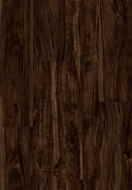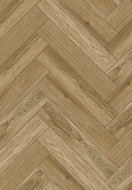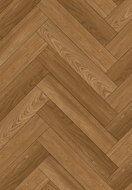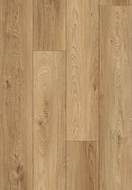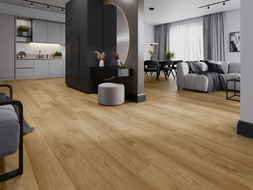
Many people choose to arrange interiors with floor panels. You need to know how to prepare the floor for panels to achieve a durable and aesthetic effect. A key step is leveling the substrate and applying the appropriate underlay. Before you begin, conduct a thorough analysis of the substrate to identify all problems that need to be removed.
What will you learn from this article?
Properly preparing the floor for panels is very important if you want to achieve a durable final effect. You will avoid later problems related to, among others, cracking of the locks connecting the panels. From this article, you will learn:
Why preparing the floor for panels is so important.
How to prepare the floor for panels.
What happens if you don't level the floor for panels.
Which underlay for floor panels works best.
Can floor panels be laid on an uneven floor.
Do floor panels with integrated underlay exist?
How to prepare the floor for panels?
Before you start laying the floor panels, it is very important to properly prepare the floor. This is a crucial stage of work that you cannot skip if you want to achieve a lasting effect for years.
Analysis of the floor condition
Check the condition of the floor. Make sure you are dealing with a dry, even, and clean floor. If there are any irregularities, cracks, and moisture, they must be removed, as they will negatively affect the quality of the panel installation.
Evaluation of floor evenness
You will assess the surface evenness using a long level or a straightedge at least 2 meters long. Pay special attention to even minor irregularities, such as small bumps and hills. An acceptable deviation is 2-3 mm over a length of 2 meters.
Removal of old floor
The surface where you intend to install panels must be cleared of any materials that used to cover it. Do this task very carefully to ensure easier laying of panels — see how to do it yourself.
Leveling the floor for vinyl panels
Eliminating even small irregularities of the substrate is crucial if you want to have a perfect floor in your home. Hills should be sanded down, and hollows should be filled with repair compound. Slopes, which often occur in corners, should also be eliminated. They are usually only visible after the installation of skirting boards. Therefore, it is better to perform a screed over the entire surface of the room rather than just in selected points.
The most popular method for leveling a floor for panels is using a self-leveling compound. The product is easy to use. It helps create a smooth surface. An alternative is concrete screeds. It is important to spread them evenly over the entire room to prevent the previously mentioned slopes from occurring.
You can also use special leveling boards to level the substrate. They can also serve as an additional layer between the floor and the panels to achieve better acoustic and thermal properties.
If you choose a self-leveling compound or concrete screed, carefully clean the floor and prime it. This will increase the material's adhesion. It is crucial to pour the compound evenly and spread it throughout the entire room. Whether the prepared floor is even can be checked again using a level or a long straightedge. If there are still any irregularities, you can correct them with an additional layer of self-leveling compound. For hills, use a concrete grinder.
Vapour barrier film
Before applying the underlay, place a vapour barrier film on the floor. This protects the panels from moisture. Choose a film with a minimum thickness of 0.2 mm. The joints should be taped to ensure proper tightness.
Underlay for panels
Using a good underlay for panels is essential to achieve sound insulation, cushioning, and even pressure on the floor throughout the room. Check what thickness of underlay for panels is appropriate.
Depending on the type of floor and the conditions in the room, you can choose from various types of underlays:
Foam underlay — the material is light and cheap, but not very durable. It will work well in most residential rooms.
Polyurethane-mineral underlay — it performs well in conducting heat. If you plan to have underfloor heating, this underlay is worth considering.
IXPE underlay — made of cross-linked radiation polyethylene foam, which is very thin but provides high protection against moisture and effectively absorbs shocks. It has excellent acoustic properties. At Mexen, we offer panels with integrated IXPE underlay.
Cork underlay — an ecological material. It performs very well in soundproofing the floor and also has excellent insulating properties.
Polystyrene (XPS) underlay — these underlay properties are excellent, if you want to lay panels on an uneven floor. It has high density, so it covers imperfections.
Corrugated paper — the least popular underlay for panels due to insufficient acoustic properties. It is an economical choice.
Installation of panels
To properly prepare the substrate for vinyl panels, you must ensure it is level, dry, and clean. Installation should be done so that expansion gaps of a minimum width of 1 cm are left by the walls. They are necessary for the natural expansion and contraction of the panels. This is a natural phenomenon resulting from changes in temperature and humidity. When installing vinyl panels, always follow the manufacturer's instructions to achieve the best visual and durability effect.
For comparison, see how the floor preparation before laying tiles looks.

Is an underlay enough to properly prepare the floor?
Using the right underlay for floor panels is essential to achieve a durable and functional floor in rooms. Their main tasks include:
good sound insulation,
eliminating minor substrate irregularities,
cushioning pressure over the entire floor surface,
increasing the comfort of using the floor.
If there is a concrete screed in the room, it is worth using polystyrene foam. It is light and easy to install. For wooden floors, the optimal choice is cork or polyurethane underlay. Their main advantage is sound damping occurring during walking. This is particularly important in multi-storey buildings.
If you plan to purchase panels compatible with underfloor heating, check the type of underlay recommended by the manufacturer in this case. This way, you will avoid damage and improper operation of both the system and the floor itself.
How to lay panels on an uneven floor?
Substrate irregularities are very dangerous for floor panels. If you ignore this problem, the material can warp and crack very quickly. If the substrate has slight irregularities, up to 2-3 mm, using a leveling underlay, such as the mentioned polystyrene or mineral underlay with high density, will suffice.
If the defects are much larger, it is worth carrying out a self-leveling compound or concrete screed. You will then enjoy a perfectly prepared floor for vinyl panels.
How to prepare panels for laying?
It turns out that not only proper floor preparation is crucial if you want to achieve a durable and aesthetic effect. Floor panels require acclimatization. The material is affected by changes in temperature and humidity. They must be stored in their original packaging from the manufacturer, in a horizontal position, in the room where they will be laid, for at least 48 hours before installation.
Ensure that the storage place for vinyl panels has the appropriate temperature — 18-24°C. Air humidity should not exceed 40-65%. Ensuring that before installation, the floor panels have been stored in the right conditions avoids later unsealing. It also minimizes surface warping and cracking.
Why is proper floor preparation for panels so important?
Preparing the floor for panels is a very important stage of work that must not be skipped under any circumstances. You're doing it mainly for yourself to avoid problems with the floor. You must know that the manufacturer has the right to refuse warranty claims if, upon inspection, it turns out that vinyl panels were laid on an uneven or improperly prepared floor.
The task of anyone who buys laminate or vinyl panels is to follow all the manufacturer's recommendations, both in terms of laying the material and preparing the floor. If vinyl panels are laid on an uneven surface, they will start to crack, separate over time, and many unattractive gaps will appear.
Remember this before laying panels
The preparation of the floor for floor panels should be done very carefully, without rushing. This is a very important stage that affects the durability of the floor and its aesthetic appearance. Unfortunately, even the best product will not fulfill its role if you skip proper floor preparation. Here are the most important tasks you need to accomplish:
Achieve an even surface — the floor before installation should be rid of bumps, hollows, and slopes. The fastest way is to use a self-leveling compound. Alternatively, a concrete screed or special leveling boards can be used.
Clean the floor of contaminants — get rid of all contaminants from paint, adhesives, trowels. Sweep and vacuum the perfectly smooth floor.
Create additional moisture protection - a proven method to protect floor panels from moisture is placing a vapor barrier film between the floor and the underlay.
Choose the underlay according to the type of floor and panels — to avoid mechanical damage to the material and achieve proper thermal and sound insulation, there must be a special underlay between the floor and panels, e.g., polyurethane or polystyrene. Additionally, it will smooth out minor floor irregularities.
Follow the manufacturer's recommendations — the product packaging contains installation instructions that must be strictly followed to guarantee years of use of floor panels, without the slightest problems. Usually, it only takes a little care — careful floor preparation and proper laying of floor panels, keeping the expansion gap.
Mexen offers floor panels with an integrated underlay, which provides thermal and acoustic insulation. Thanks to this, you don't need to lay additional materials on the floor, making the installation much quicker and more convenient.



















